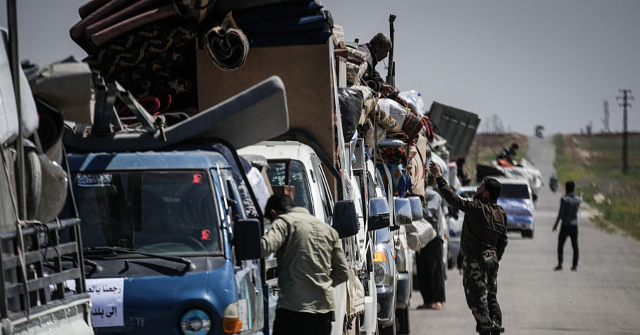The United Nations estimated in a report this week that half a million refugees have returned to Syria since the fall of dictator Bashar Assad, with another million expected to follow by the end of this year.
Over 6 million people fled Syria during the brutal civil war that began in 2011, creating one of the world’s largest refugee crises.
According to Gonzalo Vargas Llosa, chief of the U.N. refugee mission for Syria, a “strong” sense of optimism over the “historic” political changes in Syria is bringing a growing number of refugees home.
Vargas Llosa pointed to a recent survey conducted by the U.N. High Commission for Refugees in Syria that found 80 percent of Syrians living abroad are now thinking about returning home. He noted some formidable obstacles to returning still remain, including damage from the civil war that has yet to be repaired.
To that end, Vargas Llosa was pleased that President Donald Trump has decided to lift sanctions on Syria to speed the rebuilding effort.
Sanctions relief for Syria was heavily promoted by Turkey, which houses the largest population of external Syrian refugees. Turkey was not subtle about suggesting Syrians should consider returning home after dictator Bashar Assad was overthrown. Turkish President Recep Tayyip Erdogan was among the first world leaders to embrace the post-Assad government in Damascus, headed by former al Qaeda officer Ahmed al-Sharaa.
Operations and Advocacy Director Edem Wosornu of the U.N. Office for the Coordination of Humanitarian Affairs (OCHA) told Syrian state media on Monday that refugees are looking for “stability and access to basic services such as water, sanitation, and healthcare,” plus job opportunities and “social cohesion” before they return.
Wosornu applauded President Trump for lifting sanctions, and hoped more “U.N. member states and international financial institutions” would now be willing to finance Syrian reconstruction to quickly establish the conditions that would make displaced Syrians willing to return.
The International Organization for Migration (IOM) produced a report on Monday that praised Syrians as “resilient and innovative,” but said they need “significant help to rebuild their communities and their lives.”
The IOM report cited “gaps in civil documentation” and “unresolved property issues” as obstacles to returnees, as well as the previously-mentioned infrastructure damage and lack of job opportunities.
According to the IOM, roughly 1.87 million Syrians have returned to their homes since the fall of Assad, including both 1.3 million internally-displaced persons (IDPs) and 730,000 refugees from abroad. Most of the returnees from other countries have come from the nations closest to Syria, including Turkey, Jordan, Lebanon, Iraq, and Egypt.
Lebanese President Joseph Aoun on Monday called for the “safe and dignified” return of his country’s Syrian refugees.
“We affirm that Lebanon is keen on establishing the best relations with its neighbor Syria and coordinating and cooperating to confront common challenges,” Aoun said at a joint press conference in Cairo with Egyptian President Abdel Fattah el-Sisi.
“Lebanon affirms its support for all efforts aimed at maintaining Syria’s unity and sovereignty and fulfilling the aspirations of its people,” he said.
The Council on Foreign Relations (CFR) sounded a note of caution on Friday, warning that active terror threats like the Islamic State and “potential power struggles in coming months” could make Syrians nervous about returning home.
“It is still too early to understand what Syria’s political terrain will look like after the fall of the Assads. Clashes between Assad loyalists and the new Syrian government under HTS have also threatened the country’s stability, and there has been little clarity about what is happening on the ground,” the CFR noted.
The post U.N. Estimates Half a Million Refugees Returned to Syria After Fall of Assad appeared first on Breitbart.




